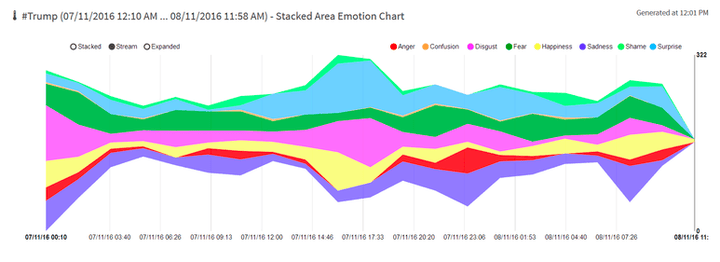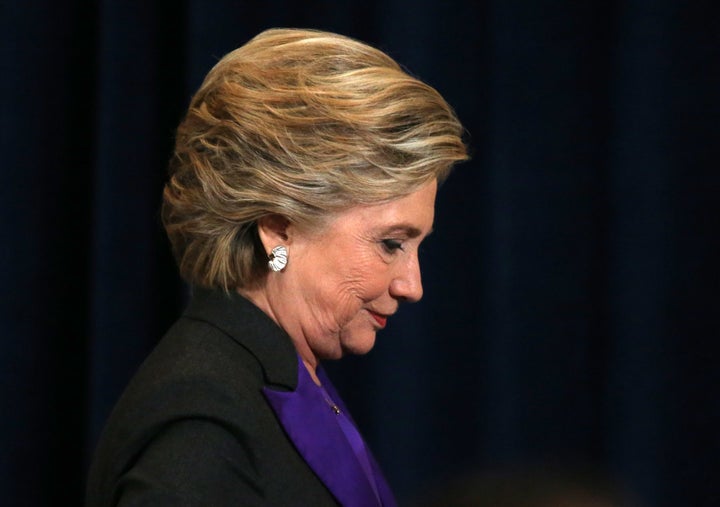
The polling industry is in the doldrums. So anyone wanting future predictions on who will win an election could do worse than turn to two academics and their computer.
Few gave Donald Trump much of a chance of seizing the US Presidency in the days running up to the November 8 vote. But Tom Jackson and Martin Sykora had data telling them one thing: Trump victory.
“We did think: this can’t be right,” says Jackson, a professor of information management at Loughborough University.
“People were saying you’ve got it wrong, you’ve got it wrong. But we were saying - we’ve done a lot of analysis before, this is what it’s saying.”
“That’s what the numbers were saying ...,” adds Sykora, also a lecturer at the university.
They drew a conclusion that most did not, save the for most loyal Trump-istas, by using sophisticated computer modelling and Twitter. That’s Twitter, the social media site widely derided as a means of gauging public opinion.
But the information scientists did things differently than most. Rather than take a headcount of which candidate someone favours, they analysed the emotion contained within the tweets.
Their invention, called EMOTIVE, swept up 3,000 tweets a second, culled from those using the most popular hashtags such as #MakeAmericaGreatAgain and #ImWithHer. They were then assigned one of eight basic emotions: anger, disgust, fear, happiness, sadness, surprise, shame or confusion, based on psychologist Paul Ekman’s six basic emotions pioneered in the 1960s.
The basic rule is this. The more tweets expressing an extreme emotion, the fewer votes a candidate was likely to get. The pair were looking for ‘choppiness in emotion’ on the graphs that came out the other end of their numbers factory, and Clinton generated more ‘choppiness’ than Trump.
“The more it is choppy over time, the more there’s uncertainty around that emotion, the worse for that candidate,” explains Sykora. “The smoother the emotional outpour over a time period, the better for the candidate.”
Below how EMOTIVE tracked Hillary Clinton in the last day of the election campaign, showing more ‘spikes and dips’ ...

... than compared to Donald Trump’s ‘emotional score’ over a similar period.


So the man who brought “grab ‘em by the pussy” to the campaign trail was more likely to becalm Twitter.
Sykora says: “In the three weeks ahead of November 8, our model was telling us Trump was ahead based on the measures we were using. There were maybe two or three instances where Hillary caught up and was slightly ahead, but the data was telling us he was dominating.”
It was no fluke, either.
EMOTIVE was originally designed in the aftermath of the 2011 London riots, where digital communication was identified as key to fueling the spread of unrest across the capital. When applied to tweets following the murder of Lee Rigby, Jackson and Sykora predicted an uprising was unlikely thanks to the mood set by the murdered soldier’s family.
Jackson says: “Lee Rigby’s wife said some very kind words about Lee, and the town itself, Woolwich, was very proud of how it has coped with the situation.”
The shift to politics was initially a side project. A university boss challenged the pair on whether they could call the Scottish independence referendum correctly, a suggestion that initially baffled them.
“We had no idea whether emotions would tell us anything about the Scottish referendum,” says Jackson. “But that’s where we noticed the ‘choppiness’ of the emotions, so we learnt a lot from that.”

The first test was the 2015 general election. It was a vote Labour was expected to win or, on the outside, the Conservatives and Liberal Democrats would renew their coalition vows. EMOTIVE, however, was pointing to the unlikely Tory victory that was.
It picked up ‘choppiness’ over Ed Miliband and his gaffes such as the “Ed Stone”.
The received wisdom, of course, is that Twitter got it wrong and that social media is an echo chamber. Jackson thinks it’s being misinterpreted.
“Most people try to do ‘sentiment analysis’ - which is positive or negative towards a certain candidate or event. Research we’ve seen with sentiment analysis ... well, they’re so useless you may as well invert the results. It’s about getting the right model, and not the obvious model.”
In fact, their model works best in an increasingly personality-driven political milieu.
Sykora says: “In the US election, there were a lot of personal attacks, it wasn’t so much about policy. Emotions resonated. And when emotions resonated that’s what we measured.”
What was moving the emotional markets was not what most would expect. Certainly not if you followed mainstream news. That Trump video and the FBI re-opening the investigation into Clinton’s emails barely registered.
“We thought we would see lots of tweets around that, and emotions around that. And it wasn’t. You looked at the tweets and there wasn’t one clear message about the emails or the video. It was a scattergun approach.”
Indeed, ‘fake news’ appears to have entered the bloodstream. “There were a few where you’re wondering: how true are they?,” says Jackson.
Here’s Jackson and Sykora’s US election prediction.
The pair didn’t get Brexit right, but they think they know why: over-65s who don’t really tweet, who had a bias towards Brexit. “We didn’t have quite enough data,” says Jackson, who fancies the French Presidential election as the next test.
The obvious question is whether relying on computer modeling of Twitter - or any other data source - is a better bet than the polls.
Jackson says: “The world has changed. The pollsters ask ‘who are you going to vote for?’ That’s a snapshot in time.
“With this type of system - longitudinal, over a long period of time - you can’t really lie.
“Your feelings might change, but it gives you a much more accurate picture of what’s going on.”
Sykora says: “Your true colours come out over a period of time. You have a real-time window into what people are thinking. You can keep taking these snapshots over a time period that are nothing to do with standard polling techniques.”
